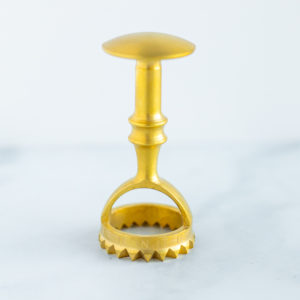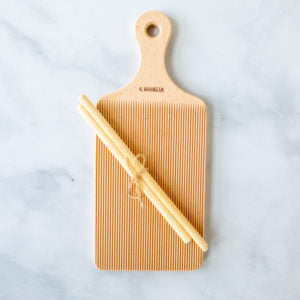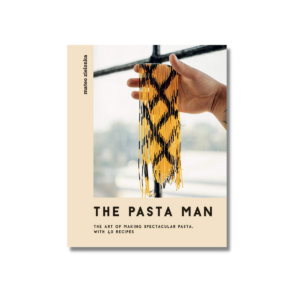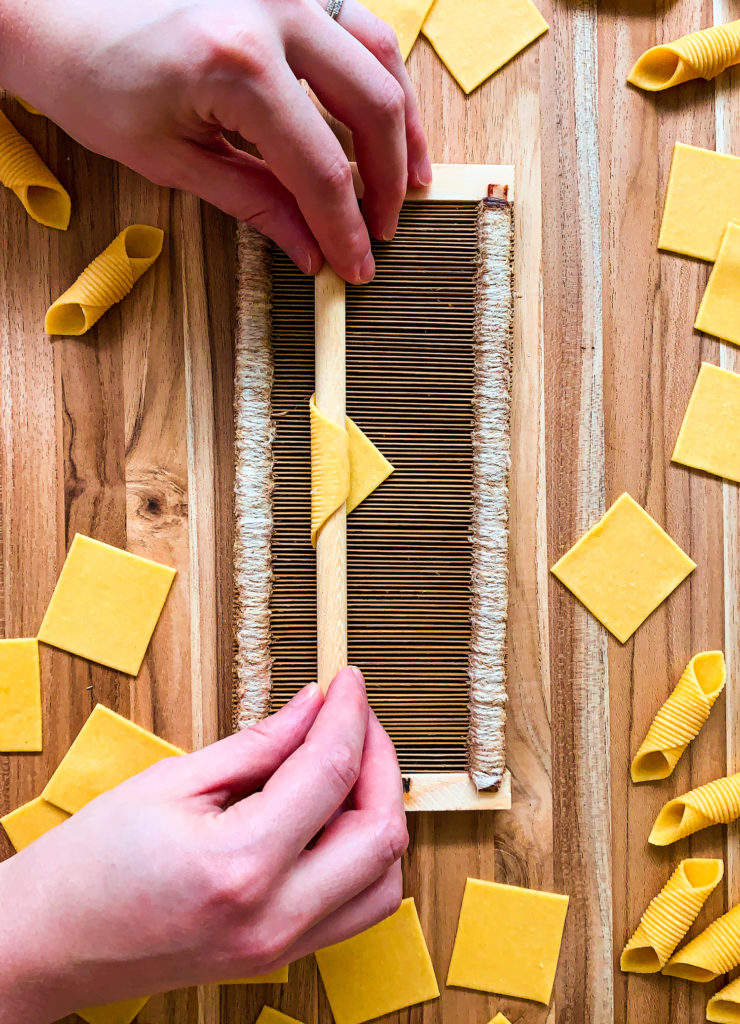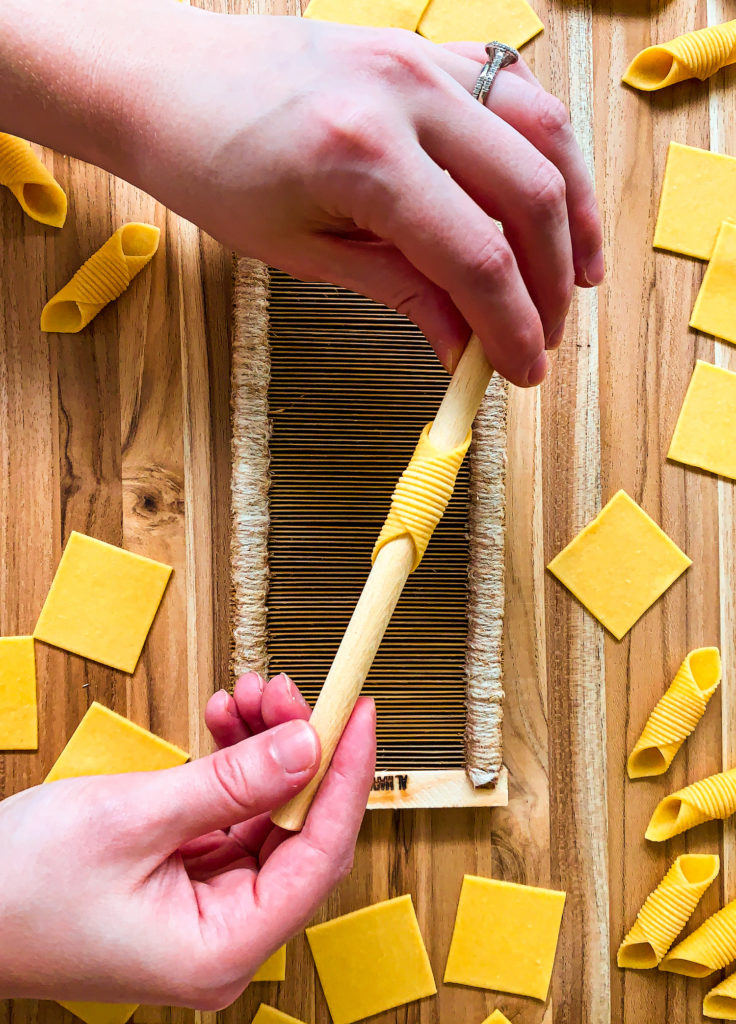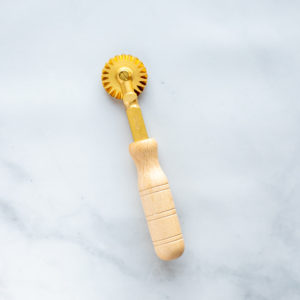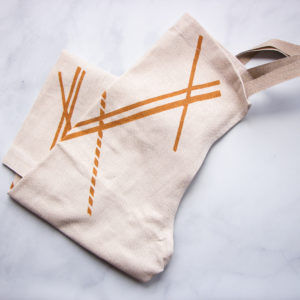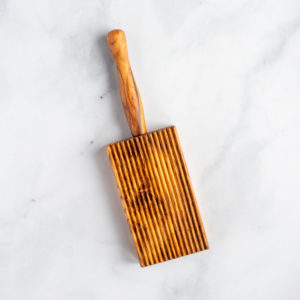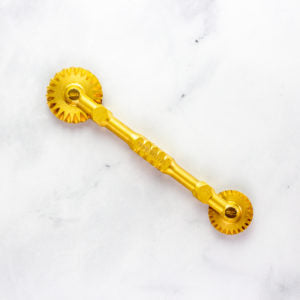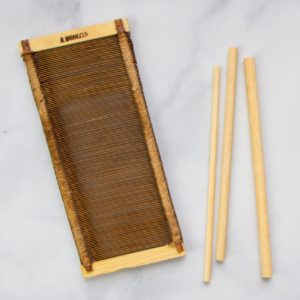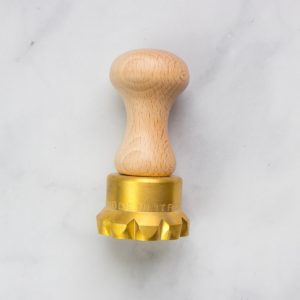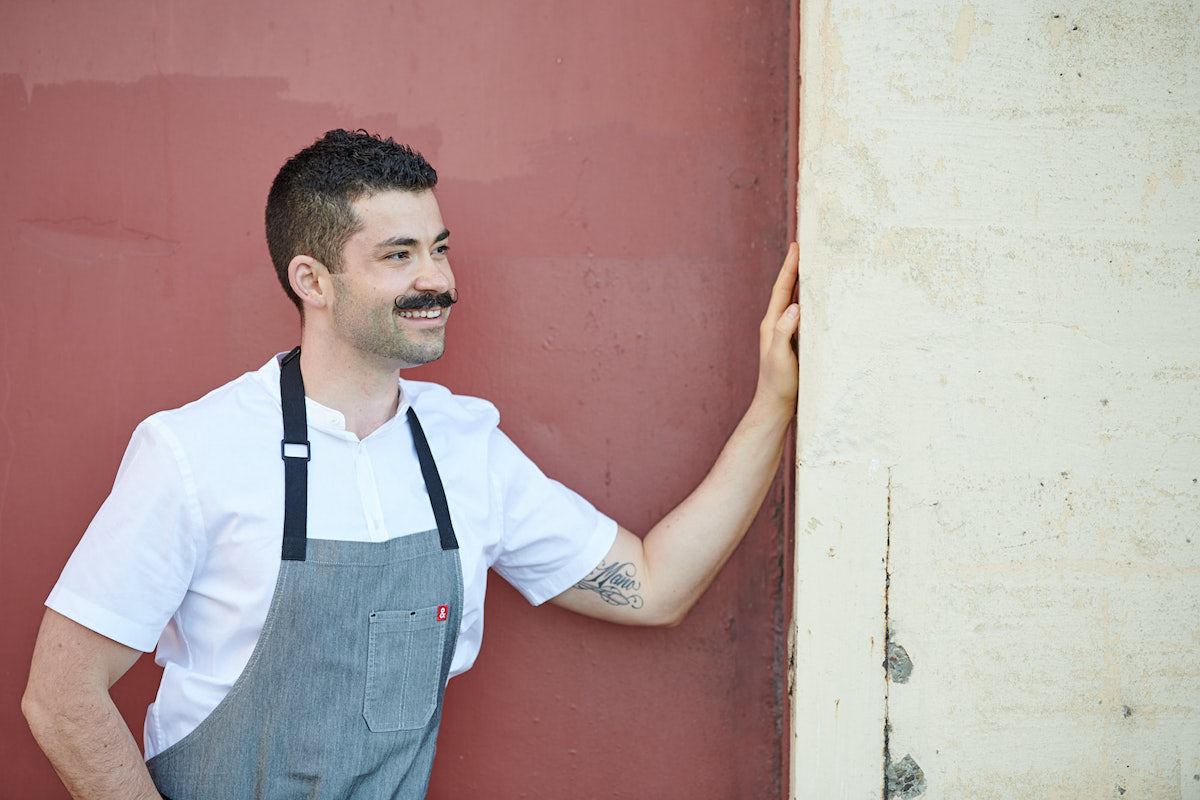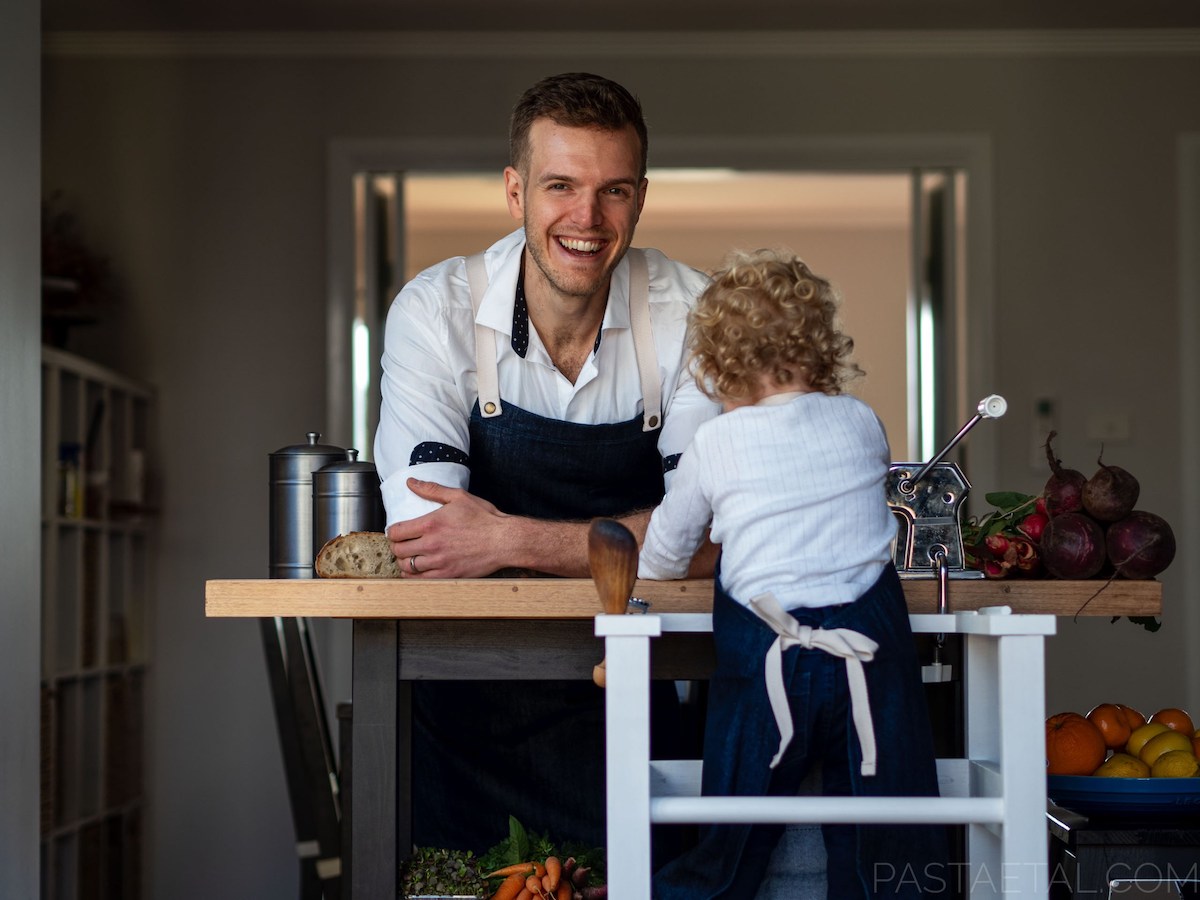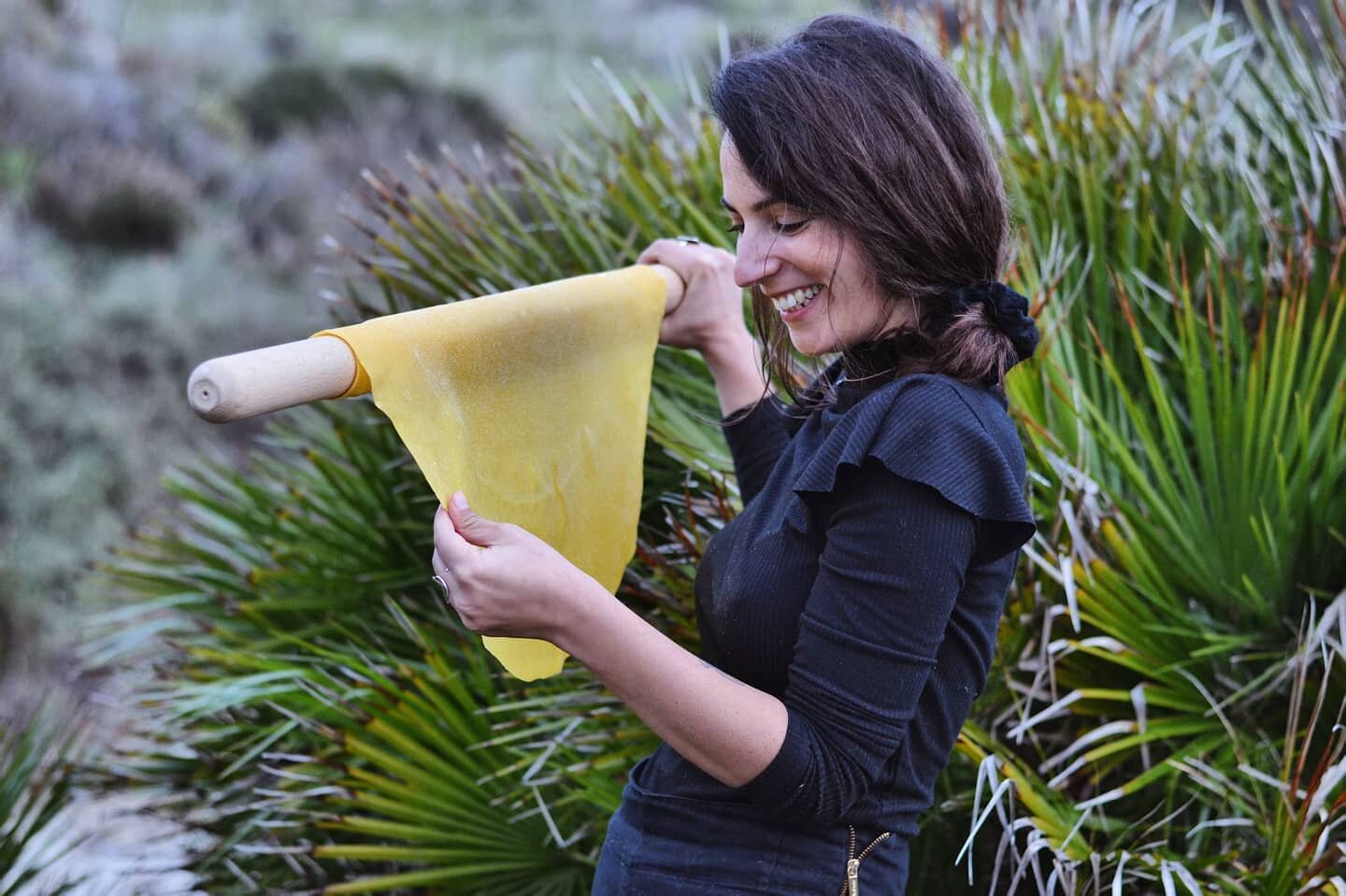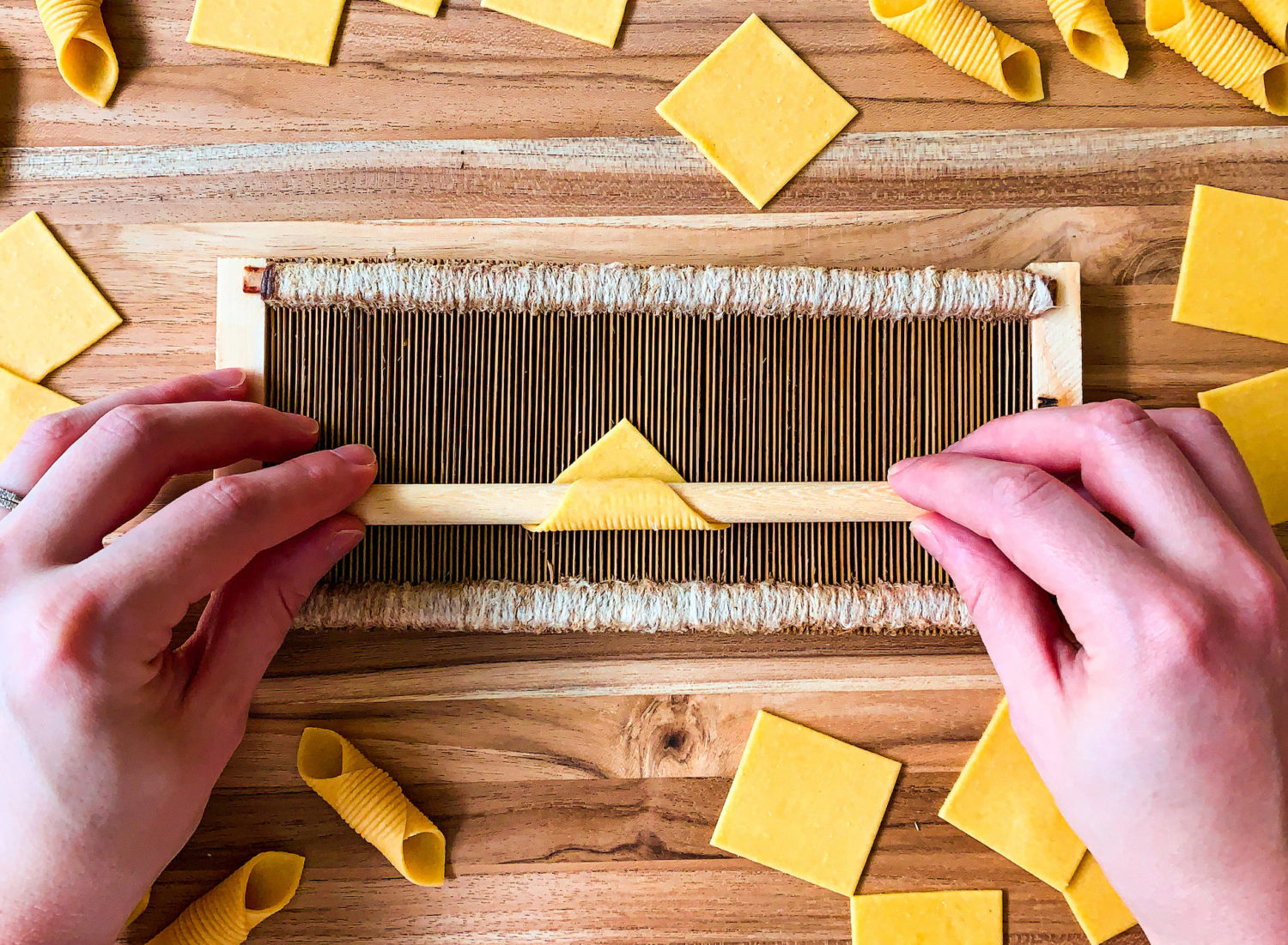
Learning the Ways of the Pastaia: An Interview with Meryl Feinstein of Pasta Social Club
Meryl Feinstein, better known as “Pasta Social Club,” is one of the most renowned pasta makers among the Instagram and online community. And for good reason: her gorgeous, glossy fresh pasta dishes combined with her warm, down-to-earth personality make for an irresistible combination. Beautiful carbs and a kind heart–what’s not to love?!
Naturally, we were curious to learn more about Meryl’s pasta-making journey and hear her take on what it takes to master the art of the “dough.” So we sat down with the lovely “pastaia” for a somewhat nerdy (warning: we go really deep into pasta hydration) but inspiring conversation.
Note: you can also watch our IGTV video interview with Pasta Social Club here.
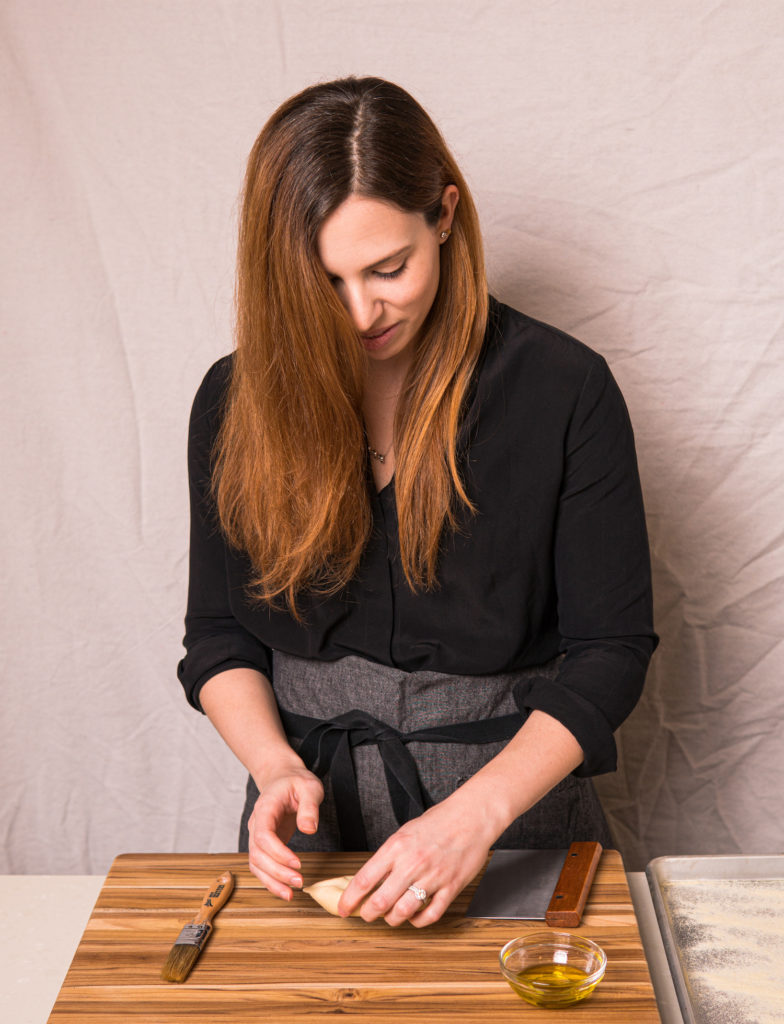
Let’s start at the beginning. How did you get into pasta making?
It’s a long story!
I did not start in the food industry. I actually studied Art History and Anthropology at school, and after graduating, I worked in PR for art museums. Looking back I think my love for both art and pasta makes so much sense now because pasta is such an artistic medium. Only unlike other forms of art, you get to eat it at the end!
I wasn’t particularly satisfied with my PR job and ended up quitting after 5 years. So with the support of my husband, I enrolled in culinary school.
A few weeks before starting, my husband and I went to Italy for our honeymoon. We traveled all over, but the stop that had the biggest impact on me was Modena. We’d gone there to eat at Osteria Francescana (as one does) and we also did some pasta-making at an acetaia (a balsamic vinegar maker). The mom of the house taught us how to make tortellini and farfalle and other pasta shapes. I was completely enthralled by it and I thought to myself, “This is what I wanna do.” I found making pasta to be relaxing, fun, and so artistic. By the time I actually started culinary school I was like, “I’m going to be a pasta person.”
During culinary school, we had to do an internship in the food industry. It was really important for me to have [restaurant] experience, so I worked at Missy Robbins’ Italian restaurant called Lilia in Brooklyn, where I worked the pastry line. And then after I finished my externship, I switched over to Missy’s newer restaurant, Misi, and worked in pasta production.
What was it like to make pasta in a restaurant? Was it stressful?
It wasn’t too stressful because there was a full team. At Misi, there were 3 or 4 stations, each covering different types of pasta from extruded rigatoni and spaghetti to tortelli and pappardelle. It was important to be able to work all the stations. I remember one time stamping out corzetti for days. It gave me a lot of practice.
How was Pasta Social Club born?
I had a vision to create a supper club experience long before I left my old job and before I’d started culinary school. I didn’t know what it would look like, it just sat in the back of my mind. When I finally realized that pasta was going to be my “craft,” I knew I could somehow put pasta and the supper club idea together.
Of course, living in New York in my 20s, I didn’t have the money or resources to start an actual supper club. Still, I decided to create the platform and just put it out in the world. I wanted to see if people were interested and if I had the discipline to be consistent and dedicate my time to it. This is why Pasta Social Club started out as an Instagram account first. It was low stakes!
I launched the account when I was working at Lilia. On my days off, I would try new pasta shapes and post my creations on Instagram.
How did you grow your Instagram to where it is today?
It was really organic. Honestly, the platform didn’t reach where it is today until 2020. I had maybe 20,000 followers in March of 2020 and then the pandemic happened and it just took off!
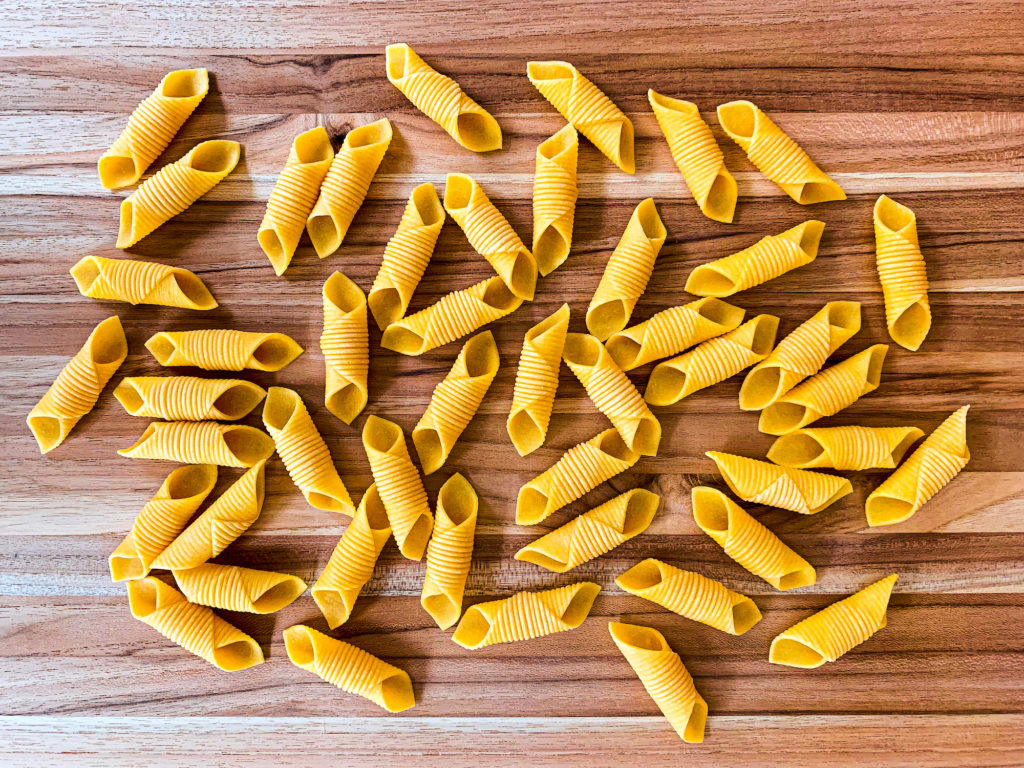
Have you had any big pasta fails?
I have fails all the time! There have been a couple of dishes where I felt like I had thought it out really well, but then when I went to make it for the first time, it didn’t taste good at all.
I remember early on I had tried to make this gnocchi recipe. At the time, I didn’t know all the intricacies of gnocchi and it was a total disaster. So sticky! I revisited it recently and it turned out great because there are so many things I’ve learned since then.
Fails are just par for the course!
Tell us about the first time you made pasta.
The first time I ever made fresh pasta I was with my husband in our 400-square-foot apartment in New York City. We were trying to make Thomas Keller’s artichoke ravioli from the French Laundry Cookbook. We didn’t have a pasta machine. It took 6 hours to make and only 5 minutes to eat it. We ended up ordering a pizza afterward. It was intense!
Any tips for beginner pasta makers?
Every day it’ll be different. Environment plays a huge role in pasta-making. Knowing how to adjust the dough and actually having the confidence when you’re making pasta is the most important thing. When you know you can fix things (and you can fix pretty much anything!), failures don’t look like failures.
Let’s talk about pasta dough. What’s your ratio for flour-to-eggs? Flour-to-water?
The most classic egg dough recipe is 1 whole egg to 100 grams of 00 flour. I did it that way for a long time before I realized I needed to be more precise to ensure more consistent results. Since eggs vary so much in size, that classic ratio can sometimes be a bit off.
So now my “ratio” for an egg-based pasta dough is about 57% hydration. For a semolina-and-water dough, I do about 49-50% hydration (Since eggs have a lower water content than water, it’s a higher hydration for egg-based doughs).
I also use a little bit of semolina rimacinata flour in my egg-based pasta dough. It’s not the most traditional, but I like adding it because it gives the pasta more structure and a little bit more of a bite since semolina flour has a high protein content.
What’s your remedy for a pasta dough that’s too dry or too wet?
I always lean dry, but increasingly, having taught many pasta classes, I think it’s easier for others to lean wet and adjust. I never use flour after the dough is made if I don’t have to because the build-up of flour on the outside will create a gummy texture on the pasta.
If your dough is too wet, add a handful of flour on top and knead it in until the dough firms up and you have creases in the dough. It always needs to have those seams when you’re kneading! If it’s so gorgeously smooth and round and it’s easy to knead, it’s probably too soft and has too much hydration.
If you run into a dough that’s way too dry, you could try breaking it into pieces, put it in the food processor and pulse it until it goes back to its flour-like form. Then add a teaspoon of water at a time and pulse until it looks like pearled couscous. You can knead it from there. You can also just dip your hands into a little bit of water and knead it into your dough until it comes together.
A wooden board also makes a big difference for kneading the dough because it absorbs excess moisture and has more friction.
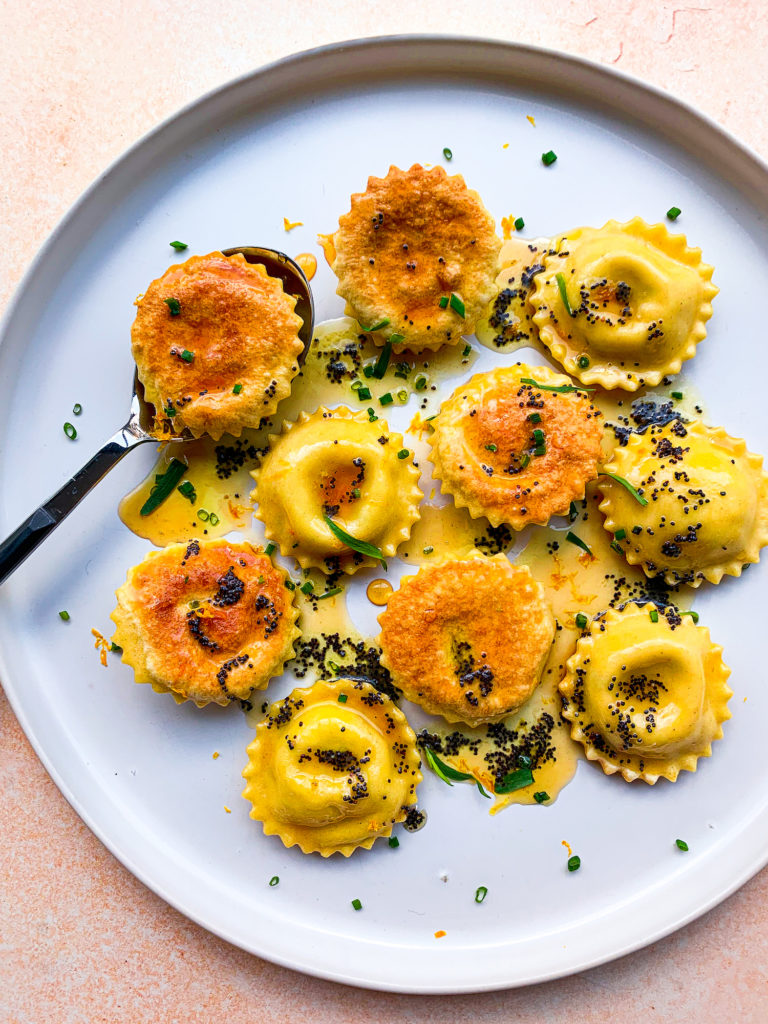
How long do you typically rest your dough for?
For fresh egg pasta, about 30 minutes. If it’s a hot and humid day, maybe a little less. If it’s cold and dry, maybe a little more.
For the hand-formed flour-and-water pasta, I tend to let it rest for about 15 minutes because a lot of those pasta shapes benefit from a drier dough. It’s really hard to make a pasta like orecchiette with a sticky dough because you won’t get the definition or ridges as you drag it. The longer you let a dough rest, the softer and stickier it becomes.
For something like pici, I rest that for about an hour because you have to roll that dough very, very thin, and it’s easier to roll when the dough is relaxed.
What’s your most used or favorite pasta tool?
I love q.b.’s small brass anolini stamp. It’s just the cutest! I also love the fluted cutters. I have a vintage one that I got on Etsy. Oh and the gnocchi board! It encompasses everything I love about pasta making, which is that you don’t need a whole lot to make great pasta.
Tips for using a ravioli stamp?
Three things. First is that I like to create an outline by making a light indent on the dough first with the stamp before I fill and cut it. That way I know exactly how big of a space I’m working with for the filling.
Second, press hard! Don’t be shy.
Third, if you’re buying a ravioli stamp, buy a good quality one. It makes a difference.
Best shapes for beginners to start with?
I get this question all the time and I always say pici! Not only is the shaping process simple, but the dough is made with ingredients you probably already have. If you have all-purpose flour (or 00), water, and olive oil at home, you can make pici. You don’t even need a rolling pin–you can use a wine bottle!
What pasta shapes are you focused on right now?
I really love the Spizzulus from Sardinia. I made them recently and I got so many mixed reactions from it. Some people were like “this looks like worms!” It was hilarious. But of course there were so many people making the dish, too, which I loved seeing.
What’s one of the best dishes you’ve ever made?
I loved the figure-eight-style corzetti with walnut sauce that I made with Karima from Historical Italian Food. I was so proud of that dish.
What’s your favorite restaurant pasta dish?
I love Rezdora, Via Carota, and both of Missy Robbins’ restaurants, Lilia and Misi, in New York. Via Carota’s smoked ricotta tortelli blew my mind and have definitely inspired some of my recipes!
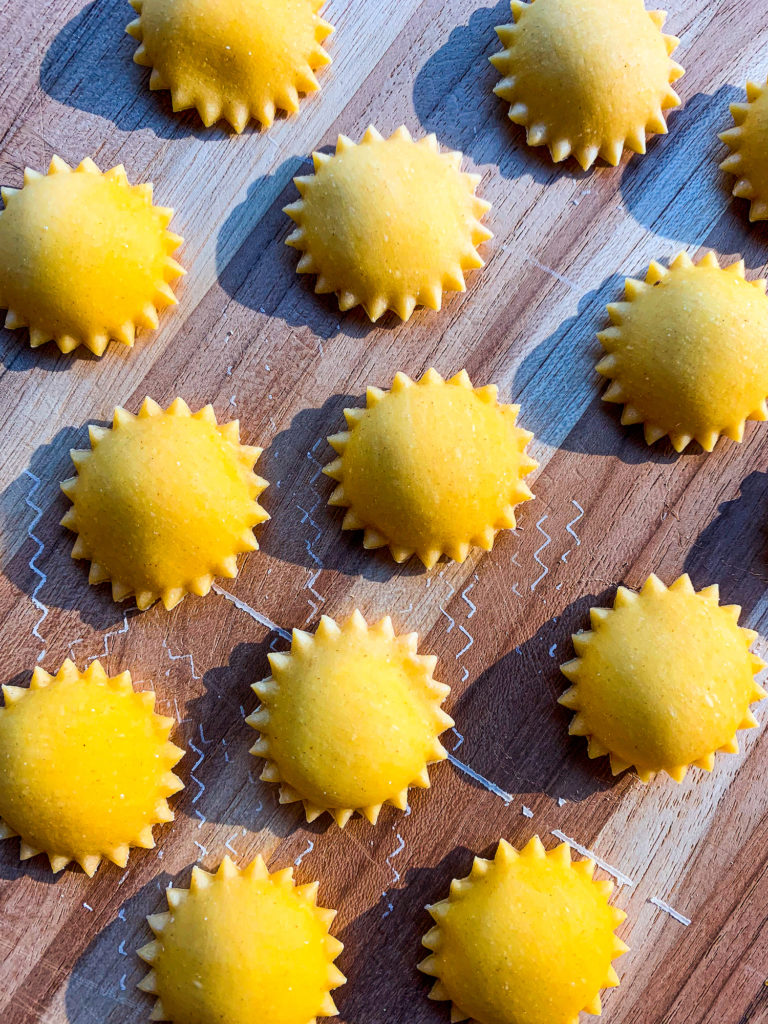
What resources do you recommend for learning about pasta?
Definitely the Encyclopedia of Pasta. Of course, I have a lot of the more well-known pasta books: American Sfoglino, Mastering Pasta, and Flour & Water. The Pasta Grannies Cookbook is one of my favorites because it’s such a joyful book and has so many wonderful sauce recipes.
Recently I’ve been trying to build my collection of regional Italian cookbooks and not just “pasta books.” You find some fantastic traditional pasta recipes in those books and really learn about the flavors and ingredients of each place, which is essential to understanding Italian cooking
Are you planning to write a cookbook?
I will say it’s definitely a goal of mine to write a cookbook!
Anything new and exciting coming up with Pasta Social Club that you’d like to share?
My husband and I are moving to Birmingham, Alabama soon and I’m super excited to explore a new city. I’ll also be starting up virtual pasta classes again in the fall. And I’m planning to do a lot more recipe development and writing, too.
View this post on Instagram
Learn more about Meryl Feinstein on Instagram @PastaSocialClub and at her website, www.pastasocialclub.com
This interview is part of a series called “Pastai Talks” where we chat with different pasta makers from around the world.
Post a Comment
You must be logged in to post a comment.


